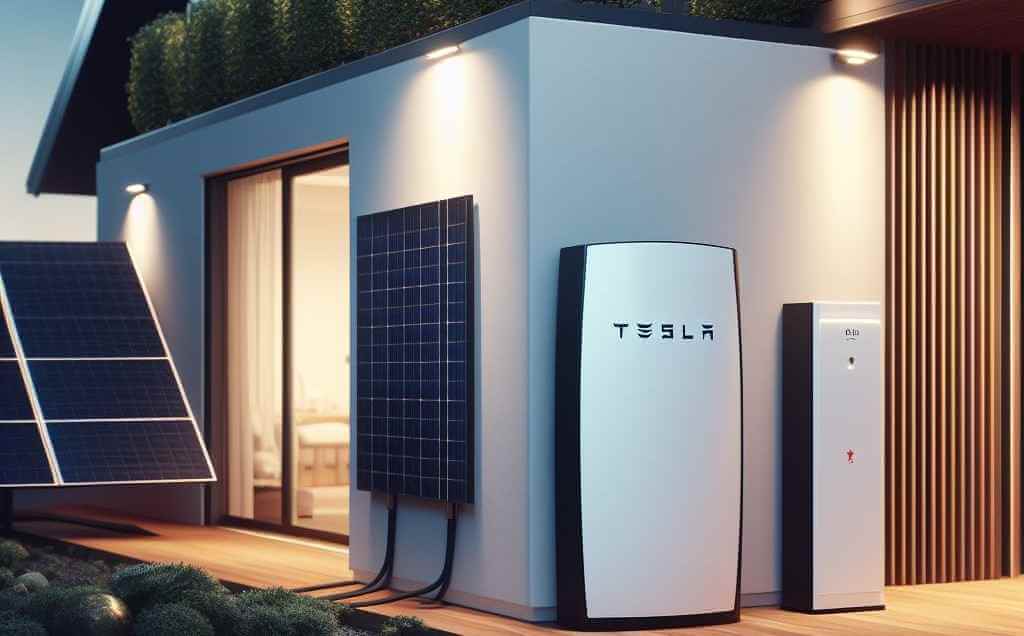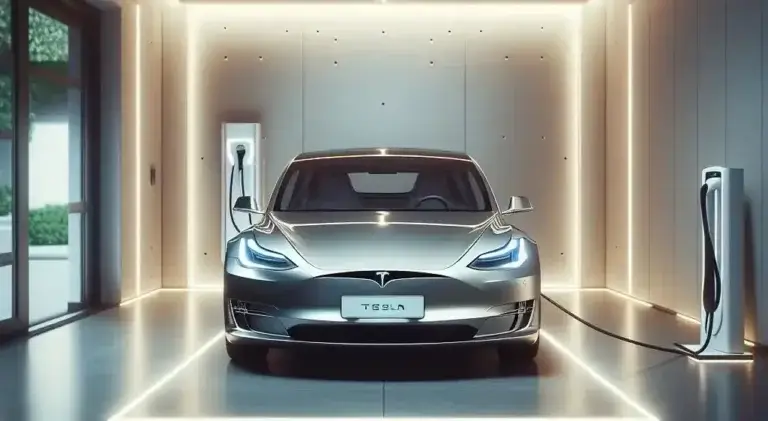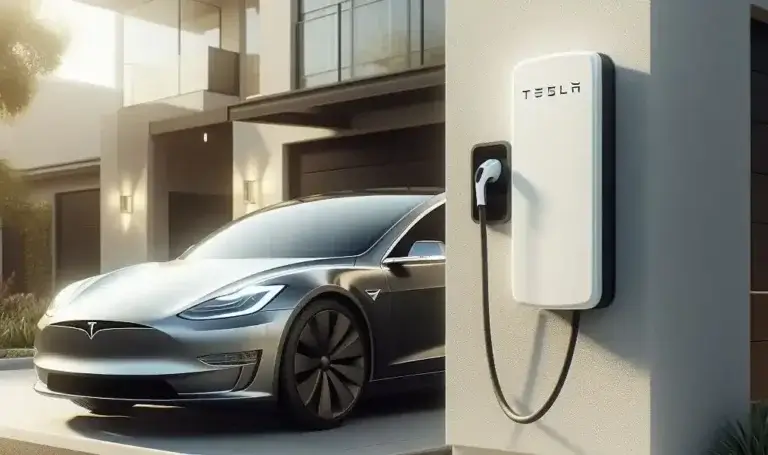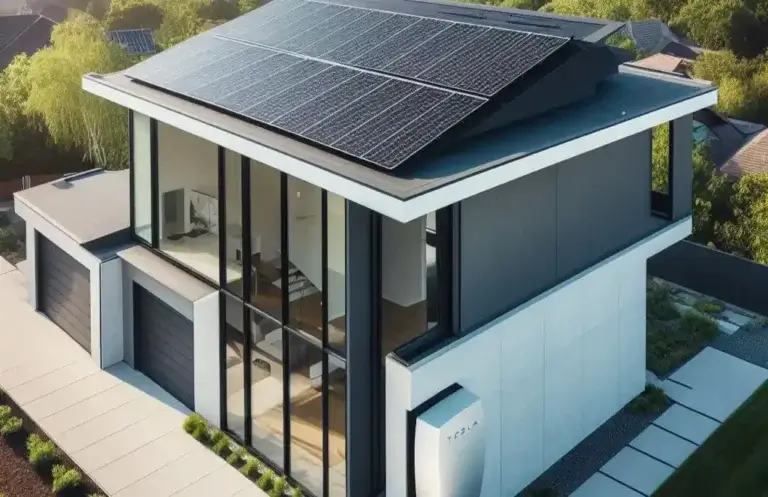Can Tesla Powerwall Be Charged By Grid? Exploring Grid Charging To Tesla Powerwall During Power Outage
Are you wondering if your Tesla Powerwall can be charged by the grid? With the rising popularity of home solar battery systems like the Tesla Powerwall, this is a common question for homeowners. In this comprehensive guide, we’ll explain everything you need to know about charging your Powerwall from the grid.
Table of Contents
What is the Tesla Powerwall?
The Tesla Powerwall is a rechargeable home battery system that stores energy from your solar panels or the grid to power your home during an outage or during times of peak electricity rates. The Powerwall comes integrated with an inverter, which converts DC energy from solar panels into usable AC energy.
There are currently two Powerwall models available:
- Powerwall – 13.5 kWh of storage
- Powerwall+ – 9 kWh or 18 kWh options
The Powerwall is designed to work together with solar panels to maximize solar self-consumption. It can also provide backup power during grid outages. With optional grid charging enabled, the Powerwall can even pull energy from the grid when rates are low.
Can Tesla Powerwall Be Charged By Grid?
Yes, Tesla Powerwalls are capable of charging from the electrical grid if the grid charging function is enabled. This allows your Powerwall to charge using grid energy whenever excess solar power is not available.
Grid charging gives homeowners more flexibility in how they use their Powerwall system. Instead of only charging from solar panels during the day, you can configure charging to take advantage of lower electrical rates at night.
How Does Grid Charging Work?
With grid charging enabled through the Tesla app, your Powerwall will pull energy from the grid to recharge its battery when solar production is low. This happens automatically based on your settings.
You can set specific hours when you want grid charging to occur, usually timed for lower cost, off-peak hours like midnight to 6 am. The Powerwall will stop grid charging once the battery is fully recharged or when electricity rates increase again.
This automated charging helps reduce energy costs and ensures your Powerwall has ample reserve capacity to power your home later or during an outage. Any excess solar production is still prioritized for charging before grid energy is used.
What Are the Requirements for Grid Charging?
To enable grid charging on your Tesla Powerwall, your home must meet certain requirements:
- Connected to the grid – Your home needs an active grid connection. The Powerwall cannot grid charge if fully off-grid.
- Tesla Gateway installed – The Powerwall Gateway allows remote control and monitoring required for flexible grid charging based on electricity rates and demand response signals.
- Software updated – Your Powerwall system software needs to be updated to the latest version to access grid charging functions.
- Utility approval – Some utilities require approval before allowing bidirectional charging from and to the grid due to metering and net metering policy limitations. Check with your utility.
As long as your specific utility allows it, upgrading to meet these requirements is typically simple. Tesla solar and Powerwall installers can handle the entire process.
What Are the Benefits of Charging a Powerwall from the Grid?
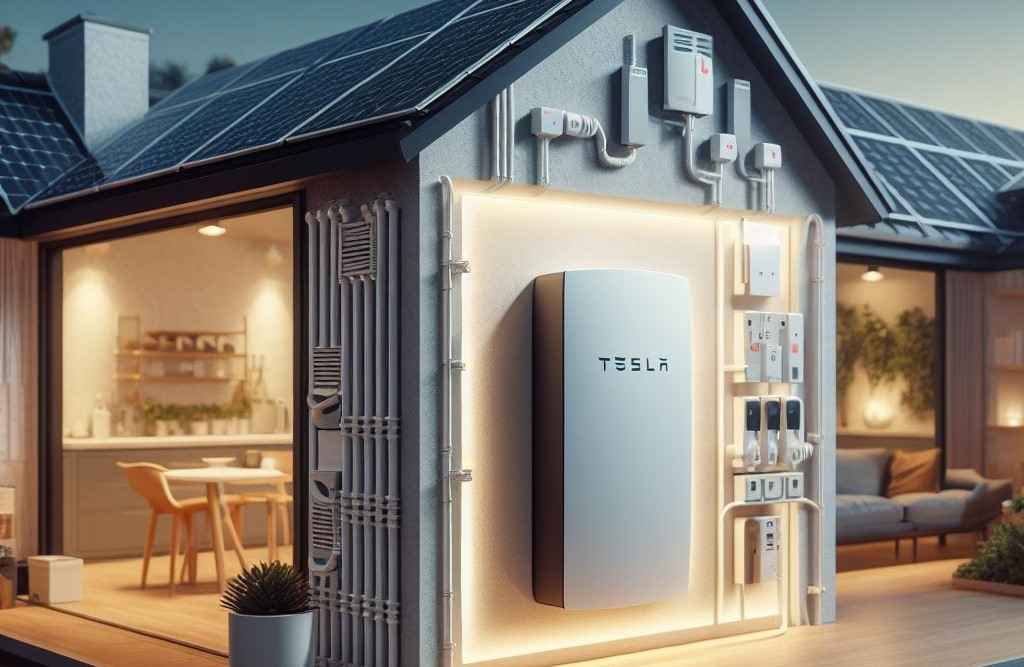
Enabling your Tesla Powerwall to charge from the electrical grid offers several useful benefits:
1. Increased Energy Savings
Grid charging allows you to charge your battery when electrical rates are lowest, often at night. By shifting charging away from peak afternoon hours when electricity prices spike, you can maximize savings. Any stored energy can then be used later to power your home and offset more expensive grid purchases.
2. Greater Power Outage Resilience
Keeping your Powerwall fully charged at all times ensures sufficient backup reserves whenever the grid goes down. Grid charging provides an automated way to maintain an adequate charge without relying entirely on solar production. Having extra reserves can also allow the Powerwall to power more essential household loads for longer during an extended outage.
3. Maximizes Solar Self-Consumption
In some cases when solar production exceeds a home’s daytime power demand, the excess often gets exported to the grid for reduced compensation through net metering credits. Grid charging allows capturing more of this surplus solar energy in your Powerwall for use later in the evening or morning when solar panels are inactive.
4. Demand Response Participation
Utilities sometimes provide financial incentives through demand response programs that reward customers who reduce energy consumption during high-demand situations. Enabling grid charging allows remote control of your Powerwall’s charging schedule to shift demand and earn rewards.
5. Reduces Grid Infrastructure Upgrades
Widespread local battery storage adoption can help reduce reliance on centralized power plants and delay the need for costly transmission and distribution upgrades to serve growing peak demand. Grid charging Powerwalls can make the wider grid more efficient.
Can You Charge a Powerwall with 100% Grid Energy?
If grid charging functionality is enabled, Tesla Powerwalls are technically capable of recharging entirely from the grid without any accompanying solar power production. However, grid charging to 100% is not recommended for typical home installations unless you have specific needs for the additional backup capacity.
Limiting grid charging can avoid unnecessary energy costs from charging solely from the grid. As a rule of thumb, it’s usually most cost-effective to only grid charge the minimum amount required to supplement daily solar power generation. But the flexibility is there if you want your Powerwall perpetually fully charged.
What Equipment is Needed to Charge a Powerwall from the Grid?
Charging your Tesla battery from the electrical grid requires the proper hardware for intelligent two-way communication and control:
- Tesla Gateway – The main communications gateway comes standard with all Powerwall installations and enables remote monitoring and software updates needed to optimize grid charging.
- Smart meter – For accurate automated grid charging scheduling, your home will need a compatible smart meter installed by your utility company to track real-time and time-of-use electricity rates rather than only cumulative monthly usage.
- Utility approval – As mentioned before, some utilities need to first approve bidirectional charging and upgrades to account for metering differences. Thankfully the Powerwall is compatible with most metering configurations.
The Tesla Gateway and smart meter allow coordinating automated grid charging to minimize costs and track electrical usage accurately. Check if your utility offers smart meter upgrades if not already installed.
What Factors Affect Powerwall Grid Charging?
Several important factors impact precisely when and how much your Tesla Powerwall battery system will charge from the electrical grid:
Solar Production
Available solar energy will always be used preferentially for Powerwall charging during the day before tapping into grid energy reserves. Your solar array’s specific size and production profile will dictate the proportion of charging that can come directly from the sun.
Battery Size
The 13.5 kWh Powerwall or 9 kWh Powerwall+ won’t need as much total grid charging compared to the high-capacity 18 kWh Powerwall+ model to stay fully charged. Consider your typical outage resilience and overnight power needs when sizing your system appropriately.
Time-of-Use Rates
Enabling automated grid charging requires a smart meter to track changing electricity rates throughout the day. Off-peak hours overnight typically allow cheaper charging to maximize energy cost savings. The Powerwall can charge faster when rates are lowest.
Home Energy Use
Your household’s normal daily energy consumption will directly determine how much solar power or grid charging is required to adequately replenish the Powerwall. More significant power draws increase charging needs to keep backup reserves topped up.
Understanding these variables allows customizing the ideal grid charging schedule and battery sizing for your situation. Tesla’s Powerwall software makes adaptations simple when needs change.
Should I Enable Grid Charging on My Powerwall?

Whether to enable grid charging when installing your Tesla Powerwall depends on several factors for each home. It mainly comes down to your family’s budget, outage resilience priorities, solar goals, and electricity cost differences between peak and off-peak hours in your region.
But for most homes, occasional grid charging during low-cost overnight hours can provide substantial long-term energy savings and convenience benefits with minimal hassle. Greater energy independence and backup reliability also make it highly worthwhile for many homeowners.
Discuss options with your Tesla-certified installer, but for most standard home solar and Powerwall configurations, enabling grid charging set during optimal overnight hours is recommended. Starting with more limited grid charging at first also allows easily expanding later once comfortable.
How Much Does Grid Charging Cost?
The precise dollar amount saved or added to your electric bill from grid charging a Tesla Powerwall depends on several factors:
- Local electricity rates
- Peak vs off-peak rate differences
- Solar panel production capacity
- Your home’s energy usage patterns
- Powerwall battery size
- Backup power needs
But by optimizing your Powerwall’s automated charging schedule only for overnight off-peak hours when rates drop, most homes can save significantly on annual electricity bills while maintaining sufficient battery reserves.
Intelligently managing when grid electricity is pulled for charging compared to exporting excess solar or powering your home directly allows greater energy independence and affordability overall. Detailed monitoring lets you optimize for savings over time.
Can Powerwall Charge from Grid During an Outage?
No, Tesla Powerwalls cannot charge from the electrical grid during a grid outage or when your home disconnects from grid power. Charging the battery requires an active grid connection.
However, any previously stored solar or grid energy within your Powerwall remains available to power home essentials loads for some period until electricity is restored. Having sufficient reserves heading into an outage means seamlessly transitioning into backup power mode automatically.
But if an outage lasts many hours or days beyond the Powerwall’s capacity, having enough solar panels to indefinitely recharge the battery once grid power returns allows comfortably weathering an extended blackout.
How is Grid Charging Controlled?
Monitoring and control of Powerwall grid charging are handled through the Tesla mobile app. Remote access allows oversight of your system status and battery reserves at any time.
You can easily enable or disable grid charging as needed. The app also allows setting specific hours and charge targets to align charging with lower off-peak electricity rates or prepare for forecasted high energy usage or bad weather.
Over-the-air software updates occasionally add enhanced grid charging functionality as well. Automatic adjustments ensure optimal, cost-effective charging aligned with your usage patterns and local utility rates. Confirming compatible utility meters and grid connections during installation simplifies accessing these smart grid-tied capabilities.
Key Takeaways on Charging a Powerwall from the Grid
- Tesla Powerwalls are capable of grid charging to supplement solar energy if enabled
- Automated grid charging occurs during lower-cost overnight hours by default
- Smart meters connected to your utility communicate real-time rates
- Grid charging provides greater energy resilience and solar usage optimization
- Most homes benefit financially through occasional off-peak grid charging
- Monitor charging remotely and tweak schedules anytime through the smartphone app
Consider enabling grid charging when installing your Powerwall to maximize savings and outage protection. Starting conservatively with minimal grid charging provides a great balance for most homes.
Frequently Asked Questions
Can I use a generator to charge my Powerwall?
Yes, Tesla Powerwalls can also charge from a home backup generator just like the grid in some emergencies when solar production alone cannot maintain sufficient reserves. An appropriate generator-to-powerwall charging adapter will be needed.
What size solar system do I need with a Powerwall and grid charging?
Most homes can meet typical Powerwall recharging needs with just a small starter solar array sized 3-5 kW when also occasionally grid charging overnight. Larger solar systems will source more charging directly from sunlight rather than tapping grid reserves.
Do I need a smart meter for Powerwall grid charging?
Grid charging functionality performs best with a smarter utility meter accurately tracking real-time rates and net metering, but an older analog meter can work in some cases too. Smart meters simplify automation based on peak vs off-peak differences.
Can I damage my Powerwall by only charging from the grid?
Occasionally recharging entirely from the grid will not damage Powerwall batteries. However, unnecessary grid charging wastes money compared to using available solar when possible. Prioritizing solar for recharging and minimal overnight grid charging works well.
Conclusion
With grid charging correctly enabled, Tesla Powerwall home battery systems provide even greater energy cost savings, electricity resilience during power outages, and renewable solar usage optimization. Setting automated grid charging to only occur overnight when rates are lowest for most regions allows effortlessly complementing daytime solar collection.
Carefully consider your family’s budget, convenience priorities, and local pricing when installing solar panels and a Powerwall ensures a system artfully balanced for affordability, backup reliability, and environmental friendliness through greater renewable solar self-consumption over time. Discuss your needs with a Tesla-certified installer to decide if occasional grid charging best suits your situation.

